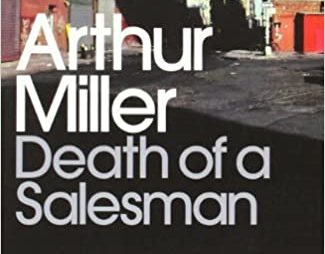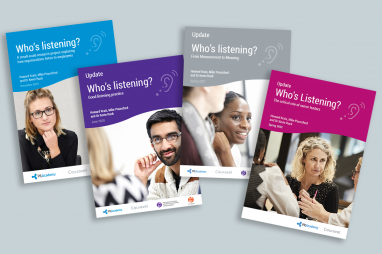The folly of age
How to authentically bridge the communication gap
About the author
Heather Lyall prepared this article as part of a CIPR Professional PR Diploma assignment while studying with PR Academy.


Don’t assume you understand young people or that you have their trust because your organisation has a TikTok account. To adapt, thrive and future proof, today’s PR professional must get into active listening mode and go further.
Don’t fall for the stereotypes
It is very easy these days to fall into the trap of generation wars, ‘Boomers’ versus ‘Millennials’ versus ‘Gen Z’. Fuelled by click bait articles and listicles it would be easy to swallow the internet’s accepted knowledge and be dismissive of an age group which isn’t your own. Younger people are often portrayed as whiny, fragile, and entitled and older people demonised as out of touch, destroyers of the environment and hoarders of wealth.
While a lack of youth engagement may not currently feature on your risk register the need to bridge this gap goes beyond organisations and services that traditionally cater to a younger demographic. While the young person of 2022 may not currently be your target audience, they may certainly feature in a few years’ time. Gen Z are increasingly educating and influencing their parents on issues such as sustainability or social responsibility and Millennials are increasingly taking on responsibilities on behalf of ageing parents.
With such diversity in humanity, we know we are all more than our stereotypes. However, the only way to bridge this divide on a practical level is to increase mutual understanding through active listening and engagement.
This is where communications and public relations have an essential role to play in the future success of your organisation.
Check your defaults and know what ‘good’ listening looks like
We need to start this process with a healthy dose of self-reflection and question our default positions and assumptions. In his highly popular book ‘The Seven Habits of Highly Effective People’ Stephen Covey notes that to feel understood is one of our deepest psychological needs. However, most people “do not listen to understand; they listen with the intent to reply”.
Jim Macnamara, Professor of Public Communication at the University of Technology Sydney, also warns that many people assume that if publics don’t agree with an organisation, it’s because they aren’t suitably informed. They simply increase the variety and volume of their outputs, potentially running the risk of alienating their publics further.
We can’t truly know what our stakeholders and publics want without listening. In his piece on creating an ‘architecture of listening’ Prof Macnamara outlined a set of several criteria. This includes an acknowledgement of the communication as well as recognition of the right to speak and to be treated with respect. In addition to giving genuine time and attention, interpreting things fairly and receptively, striving for empathy, truly considering all the information, and responding in an appropriate way.
Avoid the pitfalls
Through a critical lens, a failure to create a genuine dialogue of the kind outlined above or speaking without authenticity, could be viewed as persuasion and propaganda. This can be especially true when dealing with younger people who have a heightened distrust and cynicism of institutions and organisations. This challenge has only been compounded in recent years. For example, the London School of Economics and Political Science recently reported that Gen Z are less likely to have faith in government for the rest of their lives as a result of their experiences growing up during the pandemic. It is easy to see this distrust expanding to business and other sources of power.
Younger people are savvier than ever in their ability to spot empty virtue signalling and use the power of social media to hold businesses accountable. An organisation with an eye to the future and a robust issues management process will be ready to adapt to different age group’s experiences, cultural touch points and points of view – both internally and externally. Arguably the most important element of the ‘predict’ stage of the issues management cycle is listening and learning. Being able to forecast what is coming can be the difference between getting out ahead of an issue or the issue becoming a crisis. This is even more crucial when dealing with a younger generation where authenticity and trust is key.
Respect, accountability, and ethical practice
A great illustration of a powerful institution not listening can be taken from the Netflix series ‘The Chair’. Sandra Oh plays the head of the English department at an Ivy League university in America. One of the favourite professors made a Mel Brooks style Nazi joke in class which was caught on camera. He dismissed the students’ outrage as ridiculous as he felt it was clear he wasn’t Nazi. However, had he listened he would have understood his place of privilege and safety in his ability to make the ‘joke’ and the real increase in antisemitic hate activity on campus. A seemingly innocent joke to demonstrate a point in class led to a situation which rapidly spiralled out of control and to the professor losing his job.
Failure to keep pace with younger generations and earn their trust may mean organisations face the threat of ‘cancel culture’ or inadvertently becoming the poster child for a problem because they didn’t see the trend coming or were too arrogant to take it seriously.
Engaging with young people and facilitating a genuine dialogue to increase intergenerational understanding isn’t just the smart thing to do, listening to stakeholder groups is considered by many PR experts to be a fundamental component of ethical practice.
Ethical practice can be assessed against the TARES test developed by Baker and Martinson. Can you genuinely say that you are being truthful, authentic, respectful, equitable and socially responsible? It is conforming to ethical practice which will determine whether your organisation survives the young people’s court of public perception.
Go beyond business as usual
The need for ethical practice is supported by communications expert Prof. Joep Cornelissen who argues that stakeholder management should be considered within wider socio – economic theory. Organisations these days must be seen as legitimate in more than financial terms, not just for the benefit of the organisation and its shareholders, but for the benefit of society. This need to go beyond the traditional business role is amplified for the younger audience who are increasingly discerning in the businesses and services they choose to support. They don’t just want to buy a new top; they want a new top which has been sustainably made.
We also need to recognise that concern over the environment, big business, and politics is inspiring more and more young people into action. In fact, many of our modern day thought leaders aren’t wizened old experts with years of experience in their field, they are increasingly young and often female. The likes of Greta Thurnberg, Malala Yousef or Emma Watson offer a distinctive voice and speak with passion and integrity on the subjects which are impacting them.
We not only need to reflect on the quality of our listening skills, but we also need to be more open about who we choose to listen to.
Redefine your definition of expert
This ability to think outside the box in terms of who we choose to communicate with and learn from can be the reason why some organisations excel where others stagnate.
In a Harvard Business Review article, Francesca Gino and Bradley Staats discuss the reasons why organisations don’t learn. They argued that “organizations tend to define ‘expert’ too narrowly, relying on indicators such as titles, degrees, and years of experience”. A bias towards experts, may be able to offer increased experience and efficiency, however it also can make people more resistant to change and more likely to dismiss information that conflicts with their established views.
This is supported by Horton and Pilkington who critique the hierarchical nature of the power / interest model. They argue that a preference towards senior management can disenfranchise those who have the potential to contribute pragmatic and useful advice. In terms of heuristics, experts are more likely to use a working-forward strategy, whereas novices are more likely to work back from the solution without assumptions.
We need to develop complementary strategies for our communications which captures the views and the skills of both sides.
People of any age who may traditionally be viewed as not having the ‘right’ expertise can be the key to predicting trends, spotting issues, innovating and problem solving.
Walk the walk, don’t just talk the talk
Armed with the freedom to redefine who we consider an expert, one of the best ways in which to prepare to authentically communicate externally is to start at home with your own internal communications. Look to see if you have your target groups present in your business, ask the right questions, and listen carefully to their answers. Not only does this provide a hopefully friendly and fairly safe starting point for your listening activities, but it also provides business benefit. By practicing what you preach your business is not only acting authentically, but it could also potentially unlock future success.
For example, in 2015 Gucci created a ‘shadow board’, a group of talented novices who traditionally wouldn’t conform to the definition of ‘expert’. According to the CEO Mario Bizzarri, their insights have “served as a wakeup call for the executives.” Gucci’s sales grew 136% over the next four years – a growth driven largely by the success of both its internet and digital strategies. In the same period, Prada, who failed to predict the impact of influencers and digital ways of working, saw a drop of 11.5%. Genuine listening, reflection and acting on what was heard internally allowed Gucci to make the right communication and marketing moves externally which consolidated its success.
Have the confidence to make space
The impact of the pandemic has elevated PR professionals to a new place of importance in the board room. We shouldn’t let that door swing closed behind us; we need to use our new position of power as leverage for others who should have a seat at the table.
What you hear may be challenging, it could be uncomfortable, it could require that your organisation ‘unlearns’ a lot of accepted truth. However, encouraging senior managers to actively listen to the full range of age and experience at their fingertips could be the thing that sets your organisation apart and your external communications alight.


